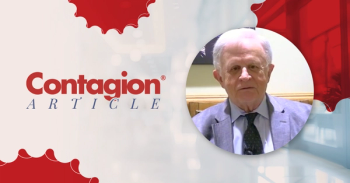
Advanced RSV Vaccine Candidate Shows Promise in Young Children
RSV-associated lower respiratory infections affect tens of millions of children and kill more than 100,000 children each year. A new vaccine candidate is showing promise in protecting against the disease.
Investigators have created a promising vaccine candidate for
In a study published
RSV is estimated to have led to 33 million cases of lower respiratory infection in infants and young children in the year 2015. Approximately 118,000 children under the age of 5
Despite decades of research, there is still no vaccine for RSV. However, corresponding author Ruth A. Karron, MD, of the Center for Immunization Research, at Johns Hopkins University, and colleagues, reported that new advances in elucidation of RSV gene function have made it possible for scientists to reverse-genetically engineer rationally designed attenuated RSV strains. Using that knowledge, the team worked to develop a vaccine that can be administered intranasally.
The vaccine candidate, known as RSV/ΔNS2/Δ1313/I1314L, is made with two key changes. First, the authors deleted the NS2 gene.
“NS2 is a virally encoded type I and III interferon antagonist that interferes with interferon induction and signaling,” Karron and colleagues wrote. “Deletion of the NS2 gene diminished RSV replication in chimpanzees.”
In addition, the team deleted codon 1313 in the polymerase (L) gene, which they say confers mild temperature sensitivity. The resulting virus was attenuated and shown to be immunogenic in nonhuman primates.
The next step was to see how it performed in humans. The investigators created a double-blind, placebo-controlled study to test the vaccine candidate. Fifteen RSV seropositive children were given the vaccine intranasally at a dose of 106 plaque-forming units (PFU). Meanwhile, 21 RSV seronegative children were given a dose of 105 PFUs, and 30 seronegative children were given a dose of 106 PFUs. The vaccine-to-placebo ratio was 2:1.
The investigators found that the 105 dose was over-attenuated, but the 106 dose replicated in 90% of children who received the vaccine and was found to be immunogenic and well-tolerated in those enrollees.
When investigators followed up following RSV season, they found that 9 of the 20 children who received the vaccine had significantly greater increases in RSV titers compared to 8 of the 10 placebo recipients.
After the second RSV season, the authors noted that one patient experienced mild RSV-associated LRI.
“Although an isolated event, this information suggests that it may be desirable to offer a booster dose of RSV/ΔNS2/Δ1313/I1314L to protect during a second RSV season,” Karron and colleagues noted.
Such questions will need to be examined in further vaccine trials, they add.
In a
“A live attenuated vaccine offers an attractive strategy to protect this population, emphasizing the importance of the results reported by Karron et al [4] for the RSV/ΔNS2/Δ1313/I1314L vaccine,” he concluded.
Newsletter
Stay ahead of emerging infectious disease threats with expert insights and breaking research. Subscribe now to get updates delivered straight to your inbox.






























































































































































































































































































































